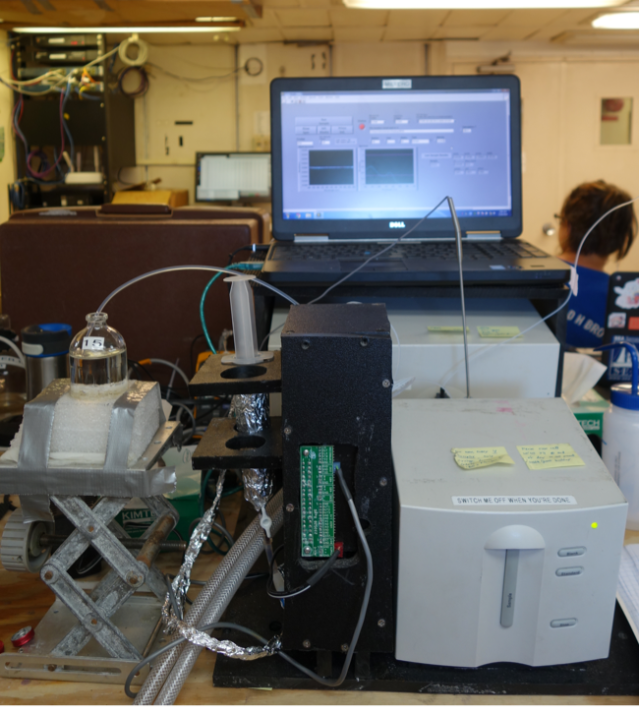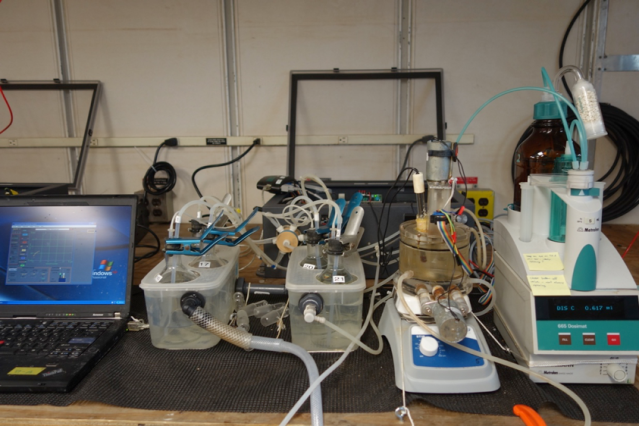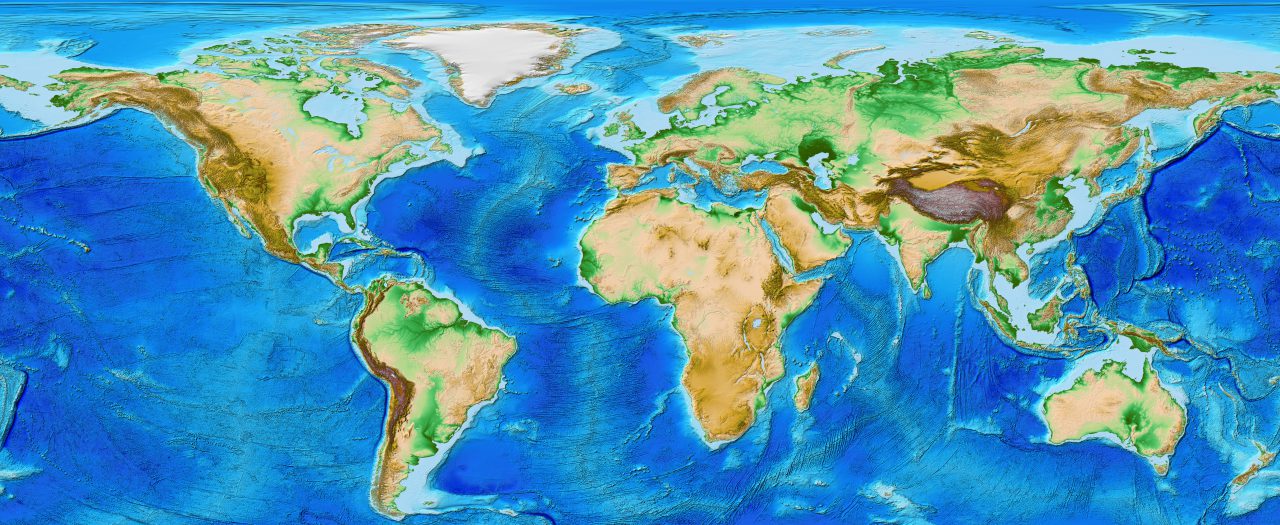Author: Annelise Hill
Hello from day 38 of our cruise! We are all enjoying our last days at sea and looking forward to exploring India a bit and returning home.
I have been working as a pH sample analyst on this cruise for the Millero Lab at RSMAS.I came into this with no previous connections to the lab (or anyone on the cruise) and little experience sampling for pH. But now, 110 stations in, after processing pH samples 12 hours a day, 7 days a week since we left Durban, I have run 2,640 samples! So you could say that my familiarity with pH measurements has increased. In this post I will be addressing the basics of pH and alkalinity and what we can learn from our measurements.
What are pH and alkalinity?
In simple terms, pH is the scale that represents the amount of acid, or hydrogen ions, in a liquid. Alkalinity refers to the ability of water to neutralize acid. The alkalinity value of a sample tells you how much the pH will change when acid is added. So, if you add acid to a sample with a high alkalinity the pH will lower only slightly, while a sample with a lesser alkalinity will see a larger pH decrease.
Why are we looking at pH and alkalinity?
It is super important that we measure these parameters as they tell us more about carbon cycling in the ocean. They not only tell us what the acidity and buffering capacity are, but they allow us to understand how much CO2 is mixing in the ocean. This is really important for understanding the extent of ocean acidification and how organisms might be impacted. For this cruise, where we have a dataset from 20 years ago to compare to and we measure pH at depth, we will be able to learn more about how quickly the surface layers are mixing and changing the acidity of the entire water column.
How do we measure pH and alkalinity?
We collect water samples from the full CTD cast, usually 24 samples, “fired” from discrete depths in the ocean, and this gives us a vertical profile of ocean chemistry, from the surface water to water from 4,000 meters down. To do so, we connect tubing to the niskin bottles and fill glass jars. Once we have our samples we take them inside to our lab.
If you have taken a college level intro chem course you are probably familiar with the analysis methods: we use titrations to measure alkalinity and a spectrophotometer to measure pH. But, unlike intro chemistry labs, our instruments are mostly automated. This increases sample processing speed and there is less space for human error – you don’t have to worry about over shooting your endpoint! On the flip side, we need to incorporate info on all the chemical equilibrium systems (acid-base or not) present in the complex seawater matrix and ensure that our experimental conditions match up with theory.
For pH, we run each sample through a spectrophotometer. Spectrophotometers send light through a sample and measure how much light was absorbed by the sample. A pH sensitive dye is added to the sample, changing the color. The amount of light that is absorbed is then indicative of the pH value. The instrument compares this absorption to that of the sample without any dye added to measure the pH.

Alkalinity is measured by titration. The instrument pulls sample into a cell and then adds small increments of acid to the sample. It measures the change of pH as more and more acid is added. From this change in pH we can get the alkalinity.

Next steps
While we are at sea sampling and analyzing 12 hours a day 7 days a week we have very little time to take a step back and start to look at the data and what it is telling us. We have an expectation of how pH and alkalinity have changed over time, but the intricate analysis involving the whole IO7N data set will be done back on shore. It will be interesting to see the changes in ocean carbon throughout the water column since the last IO7N cruise was done. Unfortunately, my work ends when we get off the boat but it will be exciting to look at the results!


